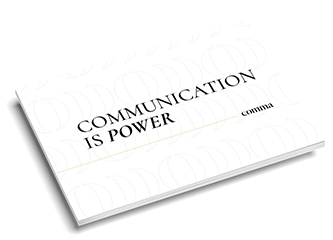In my next twitterers anonymous meeting, I will tweet: Hello, I am Rosa del Blanco, well into my thirties and I am hooked on Snapchat. Never say never. Snap-what you say? It is the social network that most young people use. Pooff! I can´t be bothered, the majority of people would respond. We already have too many social networks, I´m too old for this.
Reinvent yourself or die. When you work in Communications, there is no other option. But really what makes this social network so successful that it is about to make its initial public offering? I had to find out. And so, I discovered why this social network is used so much by young people. It is addictive, quick and ingenious.
I am not going to try and offer a tutorial, Vilma Nuñez’s Definitive Guide To Understanding Snapchat already exists for that. I am only going to offer some suggestions in order to encourage the non-digital natives amongst us to try this social network out and let themselves go a bit.
- The first thing you have to do is to stand in front of the mirror. Say your name in a loud voice and then repeat after me: you are never too old to try new channels of communications. There are grandmothers out there, who read on iPads and hipsters, who have gone back to vinyls. Don’t put limits on yourself and be daring.
- Strip yourself of any stereotypes before you create your profile. Stop demonizing this social network before you’ve even got to know it. Young people communicate in a different way, yes, but they are not silly. Their form of communication is not worse, it’s just different. Open your mind and throw yourself into it.
- Do not think about how hard everyone says it is to use Snapchat. It isn’t. It reminds me of what everyone says about having children. They say only bad stuff and that you should prepare for the worst and then it turns out that actually it isn’t like that at all.
- Look for a non digital native friend, who will create an account at the same time as you. Shared struggles are a lot more fun.
- Find a digital native friend, a cousin, niece/nephew or a younger sibling and make them your Snapchat guide.
- Once you’ve made your profile and invited your friends, it’s all trial and error. Look to Google for salvation when doubts arise. The best thing about it is that every day you can add a new snapstory and the previous one dissapears. Your snapstory is only alive for 24 hours. Conversations are deleted instantly.
- Finally, don’t forget to awaken your inner child. The best thing about this social network is that it allows you to let yourself go wild: explore, experiment, see what instant communication is all about. Reinvent the world you live in. Demonstrate how you see the world.
You will discover in 10 seconds that you can share your world in a creative way, altering reality in order to create “esperpentos” (Valle Inclán would have loved this social network). You can change the world of color. Speed it up or slow it down. Swap faces with a friend. Make memes of your enemies or put on a cat’s ears. You can also say I love you with music or hearts, and leave no traces behind.
For those of us, who work in Communications, the possibilities are endless. Companies will be able to innovate how they communicate with young people. Although at first, brands had their doubts, now many of them are using Snapchat in this way. In PR Daily, there is a summary of ideas on how to use Snapchat as a marketing tool. In the meantime, Snapchat is looking for ways to make a profit from its formated advertisement. Many possibilities are available to the world of media communication, I am sure new forms of journalism will be invented. As my colleague Carlos Balaguer has said, now is the time for journalism to take the digital leap.
As a storyteller, it is clear to me…I already see myself writing a ‘snapstory’ daily. Literature for 24 hours. Why not?






